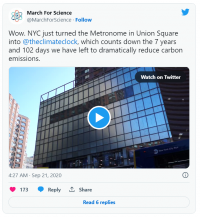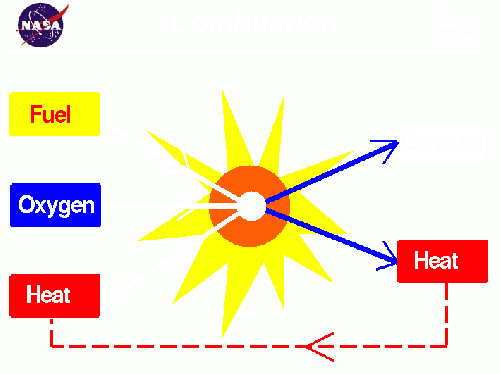Difference between revisions of "Nathan Abraham Primana"
| Line 99: | Line 99: | ||
Pyrolysis: | Pyrolysis: | ||
| + | |||
| + | '''''Energy Conversion System 2 – Date: 7 March 2023 – Topic: DESALINATION PROCESS AND THE CORELATION WITH GRAPHENE AS A USEFUL MATERIAL IN WATER TREATMENT.''''' | ||
| + | |||
| + | Desalination is the process in which removes salt and other forms of minerals from the water collected in the sea or usually brackish water, this ensures in making it suitable for human consumption, agriculture or even industrial use. Desalination can be achieved with the methods listed below, most common are: | ||
| + | Reverse osmosis (RO): process that involves forcing out water through a semi-permeable membrane allowing only the water molecules to pass through, this blocks the salt and other impurities inside the salt water. | ||
| + | |||
| + | Distillation: Conventional process that involves heating the water up to its boiling temperature and collecting the steam while condensing it back, thus creating a clean water that leaves the salt and impurities in needed behind. | ||
| + | |||
| + | Electrodialysis: Process of using electric current to remove salt and other impurities from the water by passing it through a series of membranes of charges electrodes. | ||
| + | |||
| + | Desalination: become a popular method of obtaining fresh water for areas that are distant from clean water access. On the other hand, the use of desalination is a big energy consumptive process requiring a vast infrastructure that can also be cost efficient, thus leading to economical values and consumptive. Furthermore, the by-products of the desalination process, brine, has a negative environmental impact on the environment if it is not properly disposed. Despite the challenges faced, desalination has become a critical component of water management strategies in rural areas that can’t have access to clean running water and around the world. | ||
| + | |||
| + | With an example that desalination is used in the Island of Bali, it is used in all sorts of aspects such as FnB businesses, hotel accommodations, rural areas, villages, etc. This is due to the fact that Bali faces major water shortages from the amount of tourism that has brought in amounts of foreigners to the island, brought up the problem of water sufficiency. (https://kopernik.info/en/current-projects/waste-for-water-creating-a-communityled-water-desalination-business-to-provide-clean-drinking-water) | ||
| + | |||
| + | |||
| + | With the rise in water desalination processes, membranes for water purification and desalination are used more to solve the global challenge facing of pollution and water scarcity. It requires a high selective and high permiable membrane available to adresss the limitation of current membrane technologies, this is where graphene was observed. | ||
| + | |||
| + | Graphene composed of carbone atoms that are bonded through hexagonal patterns, mono and double layered graphene are aligned in a thin formation that can be considered a two-dimensional material. The honeycomb pattern ensures that it is strong, light and most conductive. The single layer of carbon atoms would provide as a basis for many other materials. Graphene oxide (GO) is what the disperse of basic solutions to produce GO, it is a single atomic layer of graphene with oxidized functional groups of structure. | ||
| + | |||
| + | On the graphene based desalination membrane technology, is great in water desalination as it is cheap due to its light weight properties from the honeycomb structure. | ||
| + | Some challenges are faced such that the production process are expensive and consumptive, furthermore, with its usage in more and more fields, hoping that the cost of production would be reduced and be a future problem that need a solution to. | ||
| + | |||
Revision as of 20:18, 24 March 2023
Energy Conversion System 02 ENME615022
Hi, allow me to introduce myself, my name is Nathan Abraham Primana, and I partake in the class of Energy Conversion System 2 of class ENME615022. In this page, I will give the following updates on my Energy Conversion System 2 assignments and class.
My Biodata:
Name : Nathan Abraham Primana
NPM : 2006517833
Major : Mechanical Engineering
Daily Class Posts
Energy Conversion System 2 – Date: 14 February 2023 – Topic: Energy Consumption and Production.
As for today’s class of ECS 2, I was listening to the lecture that was brought by Prof Adi;
leading crisis in energy consumption and production:
1. energy outlook 2023-2024, although it wouldn’t make a significant change towards the climate significantly, what would be the outcome in the long run.
2. how can we reduce carbon emissions?
a. where does the vast majority of carbon emission produce by?
3. would a clean earth be achievable at a time where most people are dependant towards oil and gas a source of energy to run vehicles and for electricity?
4. does electric vehicle really reduce the number of pollutants towards the atmosphere?
a. what is involved in the production of electric vehicle components and parts?
b. corelating question back: what actions would be needed in order to reduce large amounts of air pollutants from the atmosphere?
Energy Conversion System 2 – Date: 21 February 2023 – Topic: Correlations in Industries of engineering and Energy production.
On th 21st of February 2023, we were asked to find the relation of the engineering industries such as sugar cane, battery, oil and gas with the help of the opensource Artificial Intelligence (AI).
To which I got the response:
The engineering industries you mentioned (sugar cane, battery, oil, and gas) are related in the sense that they are all involved in the production, extraction, and refining of natural resources to create products that are used in our daily lives.
Sugar cane engineering involves the cultivation, processing, and refinement of sugar cane to produce sugar, which is used as a sweetener in food and beverages.
Battery engineering involves the design and manufacturing of batteries, which are used to store electrical energy for various applications, such as powering electronic devices, electric vehicles, and renewable energy systems.
Oil engineering involves the exploration, extraction, transportation, and refining of crude oil to produce various products, such as gasoline, diesel, and jet fuel, as well as other petrochemicals used in manufacturing. Gas engineering involves the exploration, extraction, transportation, and refining of natural gas to produce products such as fuel for heating and cooking, as well as industrial and commercial uses. Overall, these industries are related in that they are all involved in the production and refinement of natural resources to create products that are important for modern society. about the engineering industry of Oil and gas towards the rivalry in the rise of electric vehicles and renewable energy.
To then I followed up the question by asking ChatGPT about the vast majority of carbon emission and it responded with: The vast majority of carbon emissions are produced by burning fossil fuels such as coal, oil, and natural gas for energy production. This includes emissions from power plants, transportation, industry, and residential and commercial buildings. Other human activities, such as deforestation and agriculture, also contribute to carbon emissions. Carbon emissions contribute to climate change, which can have significant impacts on the environment and human health. As a result, there is a growing effort to reduce carbon emissions by transitioning to cleaner energy sources, improving energy efficiency, and adopting more sustainable practices. This then got me thinking as to what it would take to create a cleaner environment and would it actually be achievable in the near future. This came about when I visited New York a couple of years ago and saw the timer or countdown on one of the LED screens stating the time left for us to make a change in carbon emission. This climate clock led by a climate change organization to achieve focus among people to realize the point of which carbons are present as pollution in the environment and has impacted the climate, forcing us to make a change in energy consumptions and productions, how would we be able to do that?
source: https://www.globalcitizen.org/en/content/new-york-clock-countdown-climate-disaster/
Then leads to the question that I thought about again, would electrical vehicles really reduce the amount of carbon emission in the earth, as we speak, thousands upon millions of carbons are released to the air in the form of pollution from factories of electric vehicles to produce components such as batteries, they require element from the earth, commonly Nickel and Lithium.
(Will be diving into that soon)
How would globalization then impact the fair trade in battery production?
Energy Conversion System 2 – Date: 28 February 2023 – Topic:.
With what Pak DAI had given in the whiteboard, I wrote down the equation to;
This shows that the derivative of energy with respect to time is equal to the heat energy added with work.
What are the difference with these IC engine: Cars, motorbikes, generator, etc.
types of fuel are different.
Combustion occurs when there is a mixture with fuel and air inside of a chamber i.e. an engine.
what happens during an internal combustion ->
thus what is combustion? -> the process of burning something.
From chemical prespective: rapid chemical combination of a substance with oxygen, involving the production of heat and light.
Pyrolysis:
Energy Conversion System 2 – Date: 7 March 2023 – Topic: DESALINATION PROCESS AND THE CORELATION WITH GRAPHENE AS A USEFUL MATERIAL IN WATER TREATMENT.
Desalination is the process in which removes salt and other forms of minerals from the water collected in the sea or usually brackish water, this ensures in making it suitable for human consumption, agriculture or even industrial use. Desalination can be achieved with the methods listed below, most common are: Reverse osmosis (RO): process that involves forcing out water through a semi-permeable membrane allowing only the water molecules to pass through, this blocks the salt and other impurities inside the salt water.
Distillation: Conventional process that involves heating the water up to its boiling temperature and collecting the steam while condensing it back, thus creating a clean water that leaves the salt and impurities in needed behind.
Electrodialysis: Process of using electric current to remove salt and other impurities from the water by passing it through a series of membranes of charges electrodes.
Desalination: become a popular method of obtaining fresh water for areas that are distant from clean water access. On the other hand, the use of desalination is a big energy consumptive process requiring a vast infrastructure that can also be cost efficient, thus leading to economical values and consumptive. Furthermore, the by-products of the desalination process, brine, has a negative environmental impact on the environment if it is not properly disposed. Despite the challenges faced, desalination has become a critical component of water management strategies in rural areas that can’t have access to clean running water and around the world.
With an example that desalination is used in the Island of Bali, it is used in all sorts of aspects such as FnB businesses, hotel accommodations, rural areas, villages, etc. This is due to the fact that Bali faces major water shortages from the amount of tourism that has brought in amounts of foreigners to the island, brought up the problem of water sufficiency. (https://kopernik.info/en/current-projects/waste-for-water-creating-a-communityled-water-desalination-business-to-provide-clean-drinking-water)
With the rise in water desalination processes, membranes for water purification and desalination are used more to solve the global challenge facing of pollution and water scarcity. It requires a high selective and high permiable membrane available to adresss the limitation of current membrane technologies, this is where graphene was observed.
Graphene composed of carbone atoms that are bonded through hexagonal patterns, mono and double layered graphene are aligned in a thin formation that can be considered a two-dimensional material. The honeycomb pattern ensures that it is strong, light and most conductive. The single layer of carbon atoms would provide as a basis for many other materials. Graphene oxide (GO) is what the disperse of basic solutions to produce GO, it is a single atomic layer of graphene with oxidized functional groups of structure.
On the graphene based desalination membrane technology, is great in water desalination as it is cheap due to its light weight properties from the honeycomb structure. Some challenges are faced such that the production process are expensive and consumptive, furthermore, with its usage in more and more fields, hoping that the cost of production would be reduced and be a future problem that need a solution to.
PERSONAL PROJECT INTERNAL COMBUSTION ENGINE
Introduction
With the personal project that we each must carry out on our Energy Conversion System 02 class, the topic that i am choosing for my Project is an IC Engine or Internal Combustion Engine.
Further more, the use of OpenModellica software is the used in order to achieve testing models, run simulation times and results.
Background
IC engine is what had caught my idea on this personal project of mine for my ECS 02 class, this is because we are at a state of transition from a combustion engine to run transportations and vehicles to electric modes of transport such as electric cars and motorbikes. Example of the use of electrical vehicles that are already in Indonesia is the electric motorcycle used by gojek drivers.
 Source: https://dailysocial.id/post/gojek-pours-investment-to-gogoro-through-pipe-ready-for-electric-motorcycle-trial
Source: https://dailysocial.id/post/gojek-pours-investment-to-gogoro-through-pipe-ready-for-electric-motorcycle-trial
Another example of implementations of electric vehicles slowly making a move in Indonesian roads are the Wuling AirEV roaming around the streets with a range of different variations in distance travel.
 Source: https://www.oto.com/en/mobil-baru/wuling/ev/gambar
Source: https://www.oto.com/en/mobil-baru/wuling/ev/gambar
Leading Questions
1. What would be the environmental difference in both IC engine to EV when the production of EV also would still pollute the envionment?
2. How efficient is the use of an ideal IC engine compared to that of an EV in terms of top speed, capability and torque with the results taken from Openmodellica and a real test?
Methods and Procedure
Using the Software OpenModellica to use in calculating the efficiency given from the use of a Internal Combustion Engine then given that compared to a Electrical Vehicle with the use of external softwares, further calculations and research are still on going.
With the use of thermosysPro libraries in OpenModellica is the necessar to get the viable data and results from the test model used based on a real hands-on IC Engine that I have at the moment, then can compare the efficiency of the power that is produced to the power or energy released.
A test with a bench test is necessary followed by the use in fuel usage and range test safely, while the vehicle is in use.



